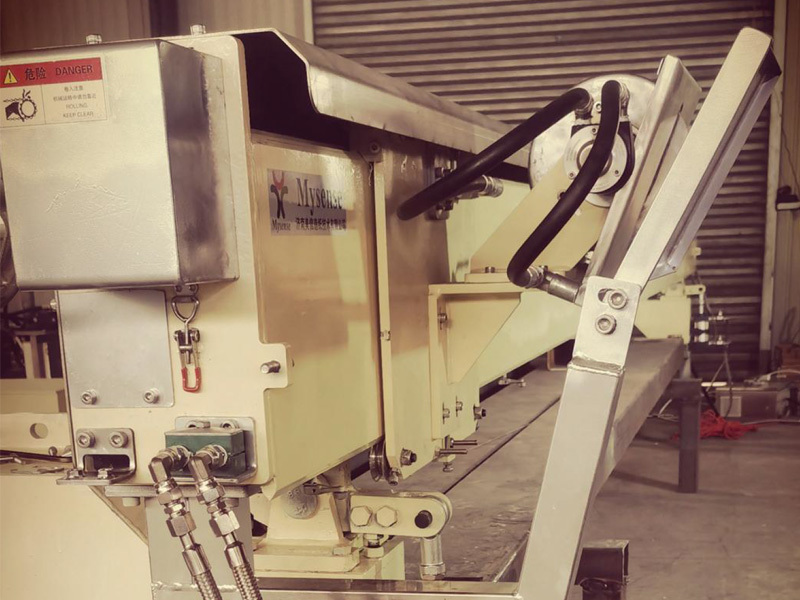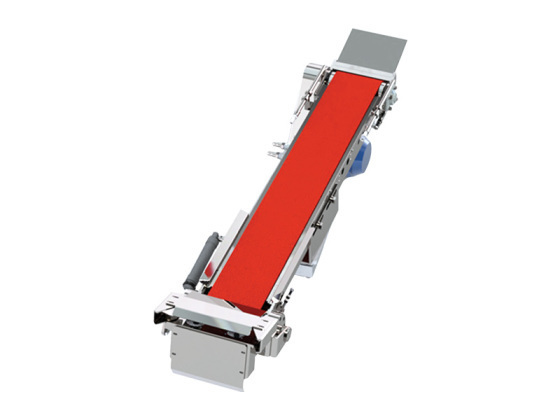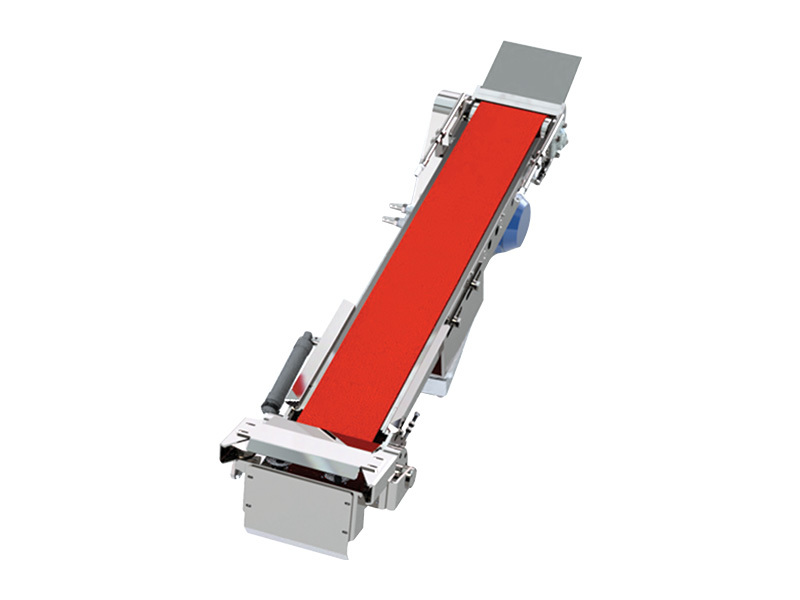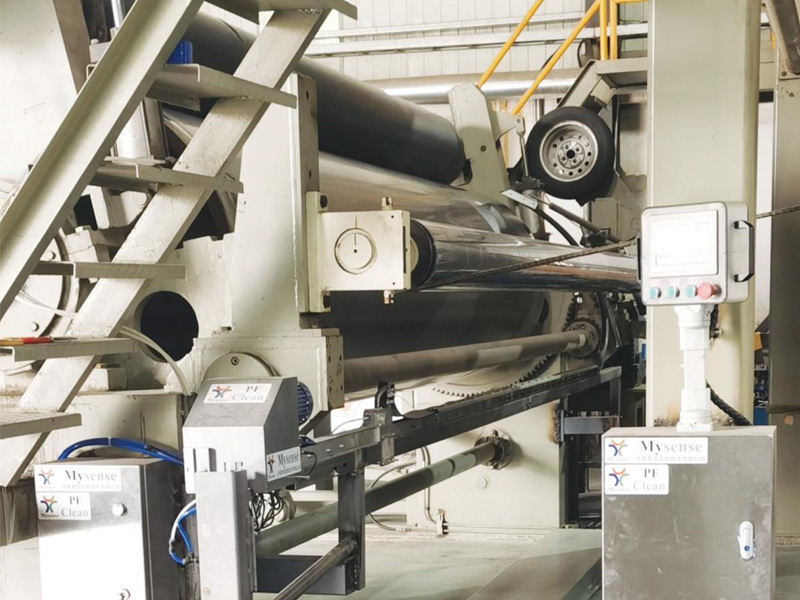Cutting-Edge Technology: The Future of Automated Tail Cutters in Industry
Published on:
2025-05-30 10:00
Cutting-Edge Technology: The Future of Automated Tail Cutters in Industry
The manufacturing sector is undergoing a rapid transformation, driven by advancements in technology and the increasing demand for efficiency and precision. One of the most promising innovations in this realm is the development of **automated tail cutters**. These advanced tools are designed to optimize cutting processes in various industries, including aerospace, automotive, and general manufacturing. In this article, we will delve deep into the future of automated tail cutters, exploring their technology, benefits, challenges, and expected impact on the industry.
Table of Contents
1. Introduction to Automated Tail Cutters
2. What Are Automated Tail Cutters?
3. Importance of Automated Tail Cutters in Industry
4. Technological Advancements in Automated Tail Cutters
5. Benefits of Using Automated Tail Cutters
6. Challenges in Implementing Automated Tail Cutters and Solutions
7. Future Trends in Tail Cutting Technology
8. Conclusion
9. FAQs About Automated Tail Cutters
Introduction to Automated Tail Cutters
Automated tail cutters are specialized tools designed to streamline the cutting processes of raw materials in manufacturing. These devices leverage cutting-edge technology to enhance precision, reduce waste, and improve overall production efficiency. As industries evolve and adopt more automated solutions, tail cutters stand out as critical components that facilitate seamless integration into modern manufacturing workflows.
What Are Automated Tail Cutters?
Automated tail cutters are machines or tools that automate the process of cutting materials—particularly **metal**, **plastic**, and **composite materials**. They can execute precise cuts with minimal human intervention, making them essential for high-volume production environments. These devices typically employ advanced technologies such as CNC (Computer Numerical Control), robotics, and AI (Artificial Intelligence) to enhance cutting speed and accuracy.
Types of Automated Tail Cutters
There are several types of automated tail cutters available, each designed for specific applications. They include:
- **CNC Tail Cutters**: Utilize computer programming for precise control and repeatability.
- **Robotic Arm Cutters**: Employ robotic technologies to perform complex cutting tasks in three-dimensional space.
- **Laser Cutters**: Use laser technology for extremely fine and detailed cuts, ideal for intricate designs.
- **Plasma Cutters**: Employ plasma technology for high-speed cutting of thick materials.
Each type serves different industry needs, and their selection depends on factors like material type, thickness, and production volume.
Importance of Automated Tail Cutters in Industry
The significance of automated tail cutters extends beyond mere efficiency. They play a crucial role in enhancing product quality, reducing production costs, and improving workplace safety. By minimizing human error and maximizing precision, these tools ensure that the final products meet stringent quality standards.
Enhancing Product Quality
Automated tail cutters offer unparalleled precision in cutting, leading to consistently high-quality products. This level of accuracy is essential in industries where tolerances are tight, such as aerospace and automotive. The reduced risk of defects not only enhances product reliability but also strengthens brand reputation.
Cost Efficiency
Implementing automated tail cutters can lead to significant cost savings. While the initial investment may be substantial, the long-term benefits—such as reduced labor costs, lower material wastage, and increased output—often outweigh these expenses. Companies can achieve a quicker return on investment, making automation a financially sound choice.
Improving Workplace Safety
Automated systems mitigate the risk of accidents in the workplace. By reducing human involvement in hazardous cutting processes, companies can create safer working environments. This enhancement in safety not only protects employees but also reduces liability costs for businesses.
Technological Advancements in Automated Tail Cutters
The field of automated tail cutters is evolving rapidly, thanks to ongoing technological advancements. Key developments include:
Artificial Intelligence Integration
AI is revolutionizing the functionality of automated tail cutters. By incorporating machine learning algorithms, these devices can optimize cutting paths, predict maintenance needs, and even adjust settings autonomously based on real-time feedback. This integration enhances operational efficiency and reduces downtime.
Internet of Things (IoT) Connectivity
IoT technology allows automated tail cutters to communicate with other machines and systems in the manufacturing environment. This connectivity facilitates real-time monitoring and data collection, enabling manufacturers to make informed decisions and quickly respond to any operational issues.
Advanced Materials
The development of new materials—such as high-strength alloys and composites—demands more sophisticated cutting technologies. Automated tail cutters are being designed to handle these innovative materials, ensuring that manufacturers stay competitive in rapidly changing markets.
Benefits of Using Automated Tail Cutters
The adoption of automated tail cutters offers numerous benefits for manufacturers. These include:
Increased Production Speed
Automated tail cutters operate at significantly higher speeds than manual cutting processes. This increased speed allows manufacturers to meet higher demand levels without compromising quality.
Consistency and Reliability
Automation ensures that every cut is executed to the same standards, resulting in uniformity across production runs. This reliability is particularly important for industries that require standardized components.
Customization Capabilities
Modern automated tail cutters can easily be programmed for various cutting tasks, allowing for greater customization. This flexibility is essential for manufacturers who need to quickly adapt to changing market demands.
Challenges in Implementing Automated Tail Cutters and Solutions
While the benefits of automated tail cutters are considerable, there are challenges associated with their implementation. These challenges can be addressed with strategic planning and investment.
Initial Investment Costs
The cost of purchasing and installing automated tail cutters can be high. However, companies can mitigate this challenge by:
- **Conducting Cost-Benefit Analyses**: Understanding the long-term savings can justify the initial investment.
- **Exploring Financing Options**: Many manufacturers offer financing plans to ease the burden of upfront costs.
Training and Skill Gap
Implementing new technology often requires specialized training. To address this, companies can:
- **Invest in Employee Training Programs**: Providing comprehensive training ensures that employees are equipped to operate new machinery effectively.
- **Collaborate with Educational Institutions**: Partnering with technical schools can help develop a skilled workforce.
Future Trends in Tail Cutting Technology
The future of automated tail cutters is bright, with several trends on the horizon. These trends include:
Increased Automation and Smart Manufacturing
As the industry moves towards **Industry 4.0**, automated tail cutters will become increasingly integrated into smart manufacturing systems. This evolution will facilitate greater collaboration between machines and humans, leading to enhanced productivity.
Emphasis on Sustainability
With growing concerns about environmental impact, automated tail cutters will also focus on sustainability. This includes minimizing waste through more efficient cutting processes and using eco-friendly materials.
Enhanced Data Analytics
The ability to collect and analyze data in real-time will be crucial in optimizing cutting processes. Manufacturers will increasingly rely on data analytics to improve efficiency, predict maintenance needs, and enhance overall performance.
Conclusion
Automated tail cutters represent a significant advancement in industrial cutting technology, offering unmatched precision, efficiency, and safety. As industries continue to evolve, embracing these tools will be essential for maintaining competitiveness. By investing in automated solutions and staying abreast of technological developments, manufacturers can position themselves for future success in an ever-changing landscape.
FAQs About Automated Tail Cutters
1. What materials can automated tail cutters handle?
Automated tail cutters can effectively cut various materials, including metals, plastics, and composites, depending on the specific type of cutter used.
2. How do automated tail cutters improve efficiency?
By automating the cutting process, these devices operate faster and with higher precision, reducing manual labor and minimizing waste.
3. Are automated tail cutters suitable for small-scale manufacturing?
Yes, automated tail cutters can be tailored to various production scales, making them suitable for both large and small-scale operations.
4. What is the lifespan of automated tail cutters?
The lifespan can vary based on usage and maintenance, but with proper care, automated tail cutters can last many years.
5. How can companies ensure that employees are trained effectively on new automated tail cutters?
Investing in comprehensive training programs and collaborating with educational institutions can help ensure that employees are well-equipped to operate new technologies.
By exploring these aspects, manufacturers can harness the power of automated tail cutters and prepare for a more efficient and innovative future in industrial cutting processes.
Previous Article
Previous Article
Latest News










